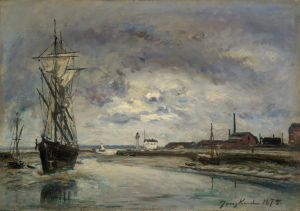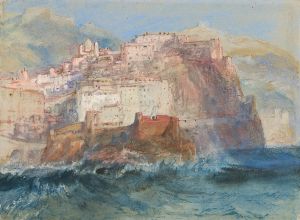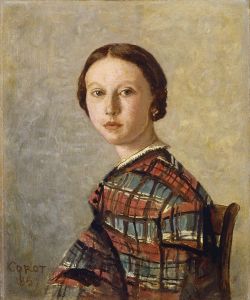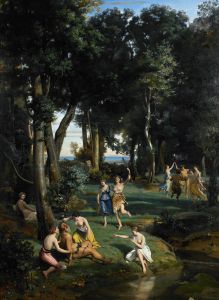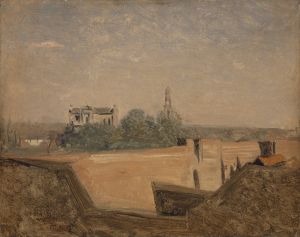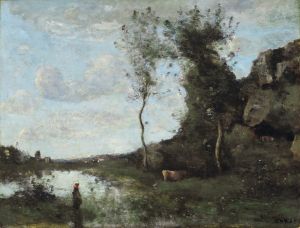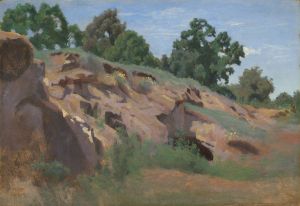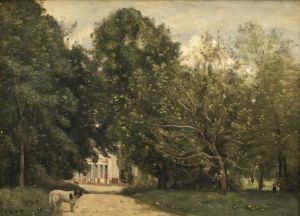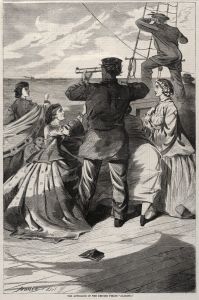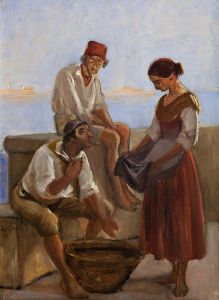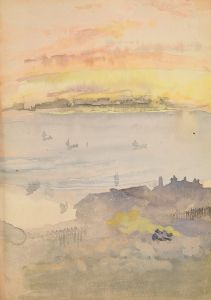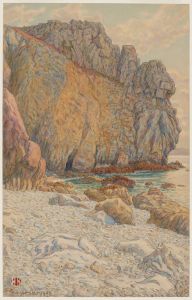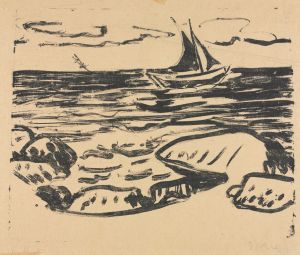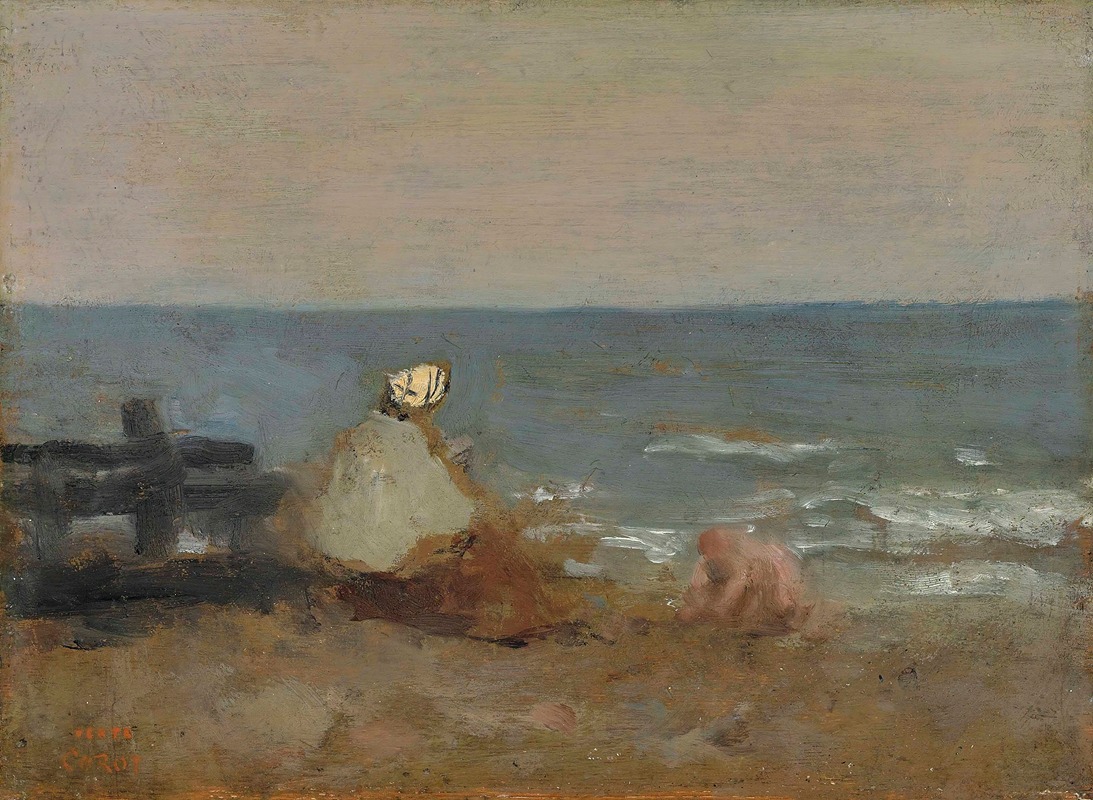
Femme et Enfant au Bord de la Mer, Étretat
A hand-painted replica of Jean-Baptiste-Camille Corot’s masterpiece Femme et Enfant au Bord de la Mer, Étretat, meticulously crafted by professional artists to capture the true essence of the original. Each piece is created with museum-quality canvas and rare mineral pigments, carefully painted by experienced artists with delicate brushstrokes and rich, layered colors to perfectly recreate the texture of the original artwork. Unlike machine-printed reproductions, this hand-painted version brings the painting to life, infused with the artist’s emotions and skill in every stroke. Whether for personal collection or home decoration, it instantly elevates the artistic atmosphere of any space.
Jean-Baptiste-Camille Corot, a prominent French landscape and portrait painter, is widely recognized for his significant contributions to the Barbizon School and his influence on the Impressionist movement. One of his notable works, "Femme et Enfant au Bord de la Mer, Étretat," exemplifies his mastery in capturing the serene beauty of natural landscapes combined with human elements.
The painting, whose title translates to "Woman and Child by the Sea, Étretat," is believed to have been created during Corot's visits to the coastal town of Étretat in Normandy, France. Étretat was a popular destination for artists of the 19th century due to its dramatic cliffs and picturesque seascapes. Corot, known for his plein air painting technique, often sought inspiration from such natural settings, which allowed him to study the effects of light and atmosphere directly from nature.
In "Femme et Enfant au Bord de la Mer, Étretat," Corot presents a tranquil scene where a woman and a child are depicted near the sea. The composition reflects Corot's characteristic soft brushwork and his ability to convey a sense of calm and introspection. The figures are integrated into the landscape, suggesting a harmonious relationship between humans and nature, a theme prevalent in many of Corot's works.
Corot's use of color in this painting is subtle yet effective. He employs a muted palette, which enhances the peaceful mood of the scene. The gentle blues and greens of the sea and sky contrast with the earthy tones of the cliffs and the figures' clothing, creating a balanced and cohesive composition. This restrained use of color is typical of Corot's style, which often focused on tonal harmony rather than vivid hues.
The painting also demonstrates Corot's skill in rendering atmospheric effects. The soft, diffused light suggests a time of day when the sun is low, possibly early morning or late afternoon, casting a gentle glow over the landscape. This attention to light and its interaction with the environment is a hallmark of Corot's work and influenced many Impressionist painters who followed him.
Corot's influence on the Impressionists is well-documented, with artists such as Claude Monet and Camille Pissarro acknowledging his impact on their approaches to capturing light and atmosphere. While Corot's style is more restrained compared to the vibrant colors and bold brushstrokes of the Impressionists, his focus on naturalism and the transient effects of light paved the way for their innovations.
"Femme et Enfant au Bord de la Mer, Étretat" is a testament to Corot's ability to blend landscape and figure painting seamlessly. The painting not only showcases his technical skills but also his sensitivity to the subtleties of human interaction with nature. Through this work, Corot invites viewers to pause and reflect on the quiet beauty of the world around them, a theme that resonates with the contemplative nature of his broader oeuvre.
Today, Corot's paintings are celebrated for their timeless quality and their role in bridging the gap between traditional landscape painting and the modern approaches of the Impressionists. "Femme et Enfant au Bord de la Mer, Étretat" remains an exemplary piece within his body of work, illustrating his enduring legacy in the history of art.





